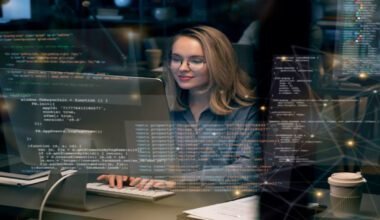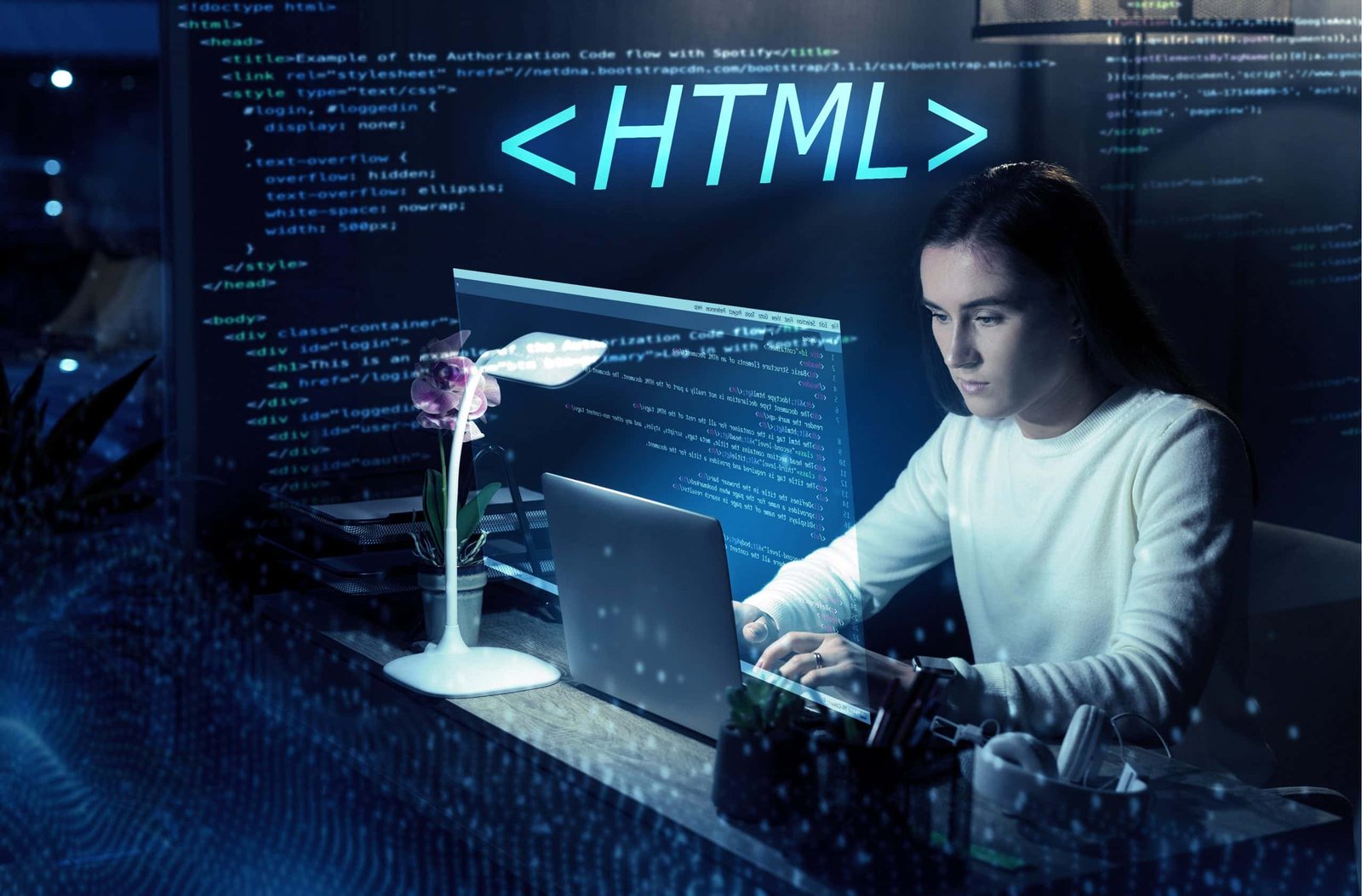Summary: Are you intrigued by coding? Python is the perfect programming language for beginners to kickstart your coding journey! This beginner-friendly guide unveils Python’s fundamentals, explores applications, and offers tips to kickstart your coding journey.
Introduction
Welcome to the exciting world of coding! If you’ve ever been curious about how websites and apps are built or if you dream of creating your own programs, then Python is the perfect programming language for beginners to start your coding journey.
This beginner-friendly guide will unveil the wonders of Python programming, taking you from the fundamentals to practical applications. So, buckle up and get ready to unleash your inner programmer! Python has become the go-to programming language for beginners for several reasons:
Readability
Python’s syntax is known for its clarity and resemblance to everyday English. This makes it easier to understand the code you write and even code written by others.
Versatility
Python is a general-purpose language, meaning it can be used for a wide range of tasks. From web development and data science to automation and game creation, Python’s applications are vast.
Abundant Resources
The Python community is incredibly supportive and has produced a wealth of learning resources, including tutorials, documentation, and online forums. You’ll never be stuck without help!
Free and Open-Source
Python is completely free to use and modify, making it accessible to everyone. You can download and install it on various operating systems, including Windows, macOS, and Linux.
Setting Up Your Python Playground
Before we delve into coding, let’s prepare your development environment. This simply means setting up the tools you’ll need to write and run Python programs. There are two main approaches:
Using an Online IDE
An Integrated Development Environment (IDE) is a software application that provides a user-friendly interface for writing, running, and debugging code. There are several online IDEs specifically designed for Python, such as Replit or Google Colab. These are great options if you don’t want to install any software on your computer.
Installing Python and a Text Editor
You can download and install Python from the official website https://www.python.org/downloads/. Once installed, you can use a simple text editor like Notepad (Windows) or TextEdit (macOS) to write your code. However, using a code editor specifically designed for Python, like Visual Studio Code or PyCharm, is highly recommended.
These editors offer features like syntax highlighting, code completion, and debugging tools, making your coding experience smoother and more efficient.
Your First Python Program: Hello, World!
Now that you’re all set up let’s write your first Python program! The classic “Hello, World!” program is a tradition for beginners. Here’s how to do it:
- Open your chosen code editor or IDE.
- Type the following line of code:
This line tells Python to print the message “Hello, World!” on the screen.
- Save the file with a .py extension (e.g., hello_world.py).
- Run the program. The method for running the program will vary depending on your chosen environment. In most cases, you can click a “Run” button or use a keyboard shortcut.
If everything is set up correctly, you should see the message “Hello, World!” displayed on your screen. Congratulations, you’ve just written and run your first Python program!
Exploring the Building Blocks of Python
As you progress in your Python journey, you’ll encounter various fundamental elements that make up a program. Here’s a glimpse into some key concepts:
Variables
Variables are like containers that store data. You can assign values to variables using the = operator. For example:
Data Types
Data types define the kind of information a variable can hold. Python has various built-in data types, such as integers (whole numbers), floats (decimal numbers), strings (text), and booleans (True or False).
Operators
Operators are symbols used to perform operations on data. Python has arithmetic operators (+, -, *, /), comparison operators (==, !=, <, >), and logical operators (and, or, not).
Comments
Comments are lines of text that are ignored by Python but help humans understand the code. Use comments to explain what your code is doing.
Branching Out: Control Flow with Conditional Statements
Python allows you to control the flow of your program using conditional statements. These statements let you make decisions based on certain conditions.
The if statement is a fundamental conditional statement. Here’s the basic structure:
For example, you can write a program that checks if a user is old enough to vote:
This program first prompts the user to enter their age and stores it in the age variable. Then, it uses an if statement to check if age is greater than or equal to 18. If the condition is True, the program prints a message saying the user is eligible to vote. Otherwise, it prints a message indicating they are not eligible.
Loops: Repetitive Tasks Made Easy
Loops are another essential concept in programming. They allow you to execute a block of code repeatedly until a certain condition is met. Python offers two main types of loops:
for loop
This loop is used when you know the exact number of times you want to repeat a code block. It iterates over a sequence of items, such as a list or a string.
This code iterates through the fruits list, printing each fruit on a new line.
while loop
This loop continues to execute a code block as long as a certain condition remains True.
This code uses a while loop to print the value of the count five times. The loop continues as long as the count is less than 5. In each iteration, the count is incremented by 1 to eventually reach the stopping condition.
Functions: Reusable Blocks of Code
As your programs become more complex, you’ll want to break down your code into smaller, reusable blocks called functions. Functions allow you to define a set of instructions that can be called from different parts of your program.
Here’s a basic example of a function that greets a user by name:
This code defines a function greet that takes a name as input and prints a personalized greeting. The function docstring (lines in triple quotes) explains the function’s purpose. When we call greet(“Alice”), the function is executed, printing “Hello, Alice!”.
Putting It All Together: Building Your First Mini-Project
Now that you’ve grasped some core concepts let’s create a simple mini-project to solidify your understanding. Here’s an idea:
Build a Guessing Game
Write a program that generates a random number between 1 and 100. The user has to guess the number within a certain number of attempts. Provide feedback to the user after each guess, indicating if they are too high, too low, or correct.
This project will involve using various concepts you’ve learned:
- Generate a random number using the random module.
- Take user input using the input function.
- Use conditional statements (if, elif, else) to check the user’s guess.
- Implement a loop (while) to allow for multiple guesses.
Remember, this is just a suggestion. Feel free to explore your own creative ideas for mini-projects!
Beyond the Basics: Exploring the Vast Python Ecosystem
Python’s true power lies in its vast ecosystem of libraries and frameworks. These pre-written modules provide functionalities for various tasks, saving you time and effort. Here are some popular domains where Python shines:
Web Development
Frameworks like Django and Flask streamline web development by providing tools for building web applications and servers.
Data Science and Machine Learning
Libraries like NumPy, pandas, Matplotlib, and sci-kit-learn empower you to analyze data, create visualizations, and build machine learning models.
Automation
Automate repetitive tasks with libraries like Selenium to control web browsers or with PyAutoGUI to interact with your desktop environment.
Game Development
Python’s applications are widespread. It can also be used in game development. Frameworks like Pygame allow you to create simple to complex games.
The possibilities are endless! As you delve deeper into Python, explore these libraries and frameworks to expand your programming horizons.
Keep Learning and Keep Coding!
This blog post has just scratched the surface of the amazing world of Python programming. The key to mastering any language is consistent practice. Here are some tips to keep you on your coding journey:
Practice Daily
Even small coding exercises can significantly improve your skills. Set aside some time each day to work on projects, tutorials, or challenges.
Explore Online Resources
There’s a wealth of free online resources available, including tutorials, documentation, and interactive coding platforms.
Join the Python Community
Connect with other Python enthusiasts through online forums, meetups, or coding communities. Share your progress, ask questions, and learn from others.
Don’t be afraid to experiment
The best way to learn is by doing. Experiment with different approaches, try new libraries and break things (and learn how to fix them!).
Most importantly, have fun!
Programming should be an enjoyable experience. Celebrate your small victories and keep your passion for coding alive.
With dedication and exploration, Python will unlock a world of possibilities for you. So, start coding today and embark on your exciting journey into the programming world!
This blog post has equipped you with the foundation to begin your Python programming adventure. Embrace the challenges, seek out new knowledge, and, most importantly, have fun while coding!
Ready to Learn More About Python
If you’re eager to propel your Python skills to the next level, consider enrolling in Pickl.AI’s Python Programming Course for Beginners.
Pickl.AI’s curriculum has been created by industry experts and goes beyond the basics. You’ll delve into practical applications, explore powerful libraries, and gain the confidence to tackle real-world projects.
With its interactive learning modules, personalized support, and self-paced format, Pickl.AI caters to learners of all backgrounds and schedules.
Don’t wait any longer! Unleash the power of Python and embark on your coding journey today.
Visit Pickl.AI’s website to learn more about their Python for Data Science Course for Beginners and take the first step towards a rewarding career in tech or simply unlock the power of coding for your personal projects.
Frequently Asked Questions
Is Python Difficult to Learn for Beginners?
Python is known for its clear and concise syntax, making it easier to learn compared to other programming languages. With its focus on readability and beginner-friendly resources, Python is an excellent choice for those new to coding.
What Can I Achieve with Python Programming?
Python’s versatility allows you to accomplish a wide range of tasks. Python equips you with valuable skills across various domains, from building websites and automating workflows to analyzing data and creating machine learning models.
Is Pickl.AI’s Python Programming Course Right for Me?
Pickl.AI’s course caters to learners of all backgrounds, whether you’re a complete beginner or have some basic coding experience. With flexible learning options and dedicated support, Pickl.AI can help you achieve your Python programming goals.










